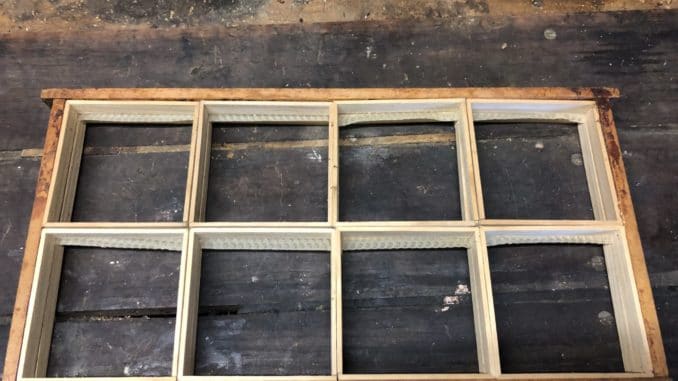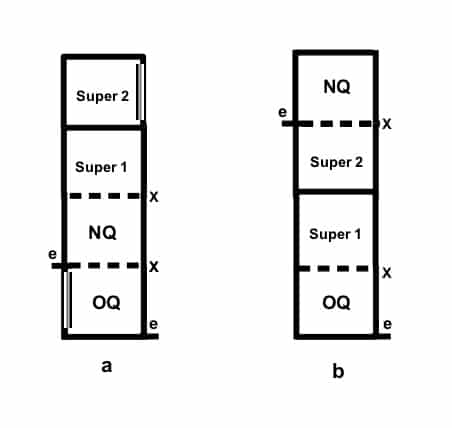
Alan Wade
A dreamy reflection
This summer the club and I have run nine two-queen hives, four in the wetlands apiary and five at my home and on a pleasant box woodland block in Narrabundah Lane. They have been the ones that have made honey though several single-queen hives have produced a little over half a super.
Overall the honey flow in most apiaries in the Canberra region has been poor-to-mediocre and was presaged by exceptionally poor early season buildup. Not a season for a beginner to start in bees and emphatically not one to run two-queen hives! Nevertheless the challenge was there, especially factoring in the number of queens that failed early on in the club apiary and the angst of whether to cut losses and try to maintain the bees we had or try again with two queens.
At least the heavy lifters got first hand experience of handling bees in two-queen hives.
And if we look back further? Many designs have come and gone over the years, the latest to appear being the Warré and Kenyan Top Bar as well as flow hives. The old standard Langstroth has changed not only with the introduction of many plastic models but, importantly, the light-weight insulated hive, a very promising design that is evolving in flexibility and design. Of interest, to me at least, are the first inklings of running two-queen hives dating back to 1907 with the remarkable Alexander operating in the then rich bee pastures north of New York. That two-queen colonies could be operated very simply – one brood nest stacked on another, with all honey supers placed on top – was discovered only relatively recently.
Looking forward to next season
Hopefully next season will be kinder on beekeepers if not the bonanza of 2017-2018.
If necessity is the mother of invention, then you might dream up ways to improve your beekeeping elan or try a different scheme to run your bees.
So in reflecting on the bumper season of 2017 and 2018 and now, looking back on poor late flow 2018-2019 conditions, we might ask whether we might have taken more beach holidays or how we might have done better with our bees.
One thing the club might have done much better in that bumper season would have been to take off a whole lot more honey during the honey flow. We might have got three quarters of a tonne rather just topping 500 kg. As good evidence of this, with a little more diligence, I got half tonne of honey off my handful of backyard hives. Commercial beekeeper practice is to take off honey as fast as possible but we were tied to piling on supers and calendar-based honey extraction events.
The other half of the equation is to keep your bees in tip top order, something we can all do by paying attention to hive siting (out of the wind and always in the open in full sun), swarm prevention (swarming is largely avoidable), hive nutrition (always leave spare honey for brood and feed both irradiated pollen and heavy 2:1 sugar syrup if needed), regular disease inspection (taking immediate remedial action if problems surface) and annual or biennial requeening.
Two-queen hives – a more productive prospect?
This summer I’ve been further experimenting with and have been frustrated by running the very strongest of colonies, those run using two queens rather than the usual one. Two-queeners are no beekeeping panacea, indeed they can be rather too challenging for the most seasoned apiarist, eat tonnes of time but produce prodigious amounts of honey. For me at least, curiosity killed the cat:
From hence, ye beauties, undeceived,
Know, one false step is ne’er retrieved,
And be with caution bold.
Not all that tempts your wandering eyes
And heedless hearts, is lawful prize;
Nor all that glisters, gold.
Thomas Gray
Ode on the death of a favourite cat drowned in a tub of goldfishes
For the extra curious, a simple two-queen hive plan, The Juniper Hill Plan, will appear shortly in the Two-Queen Hive Special Interest Group folder as a simple stand alone blog. To whet your appetite here is a standard image of the two key setups for 2Q hives.


Be the first to comment